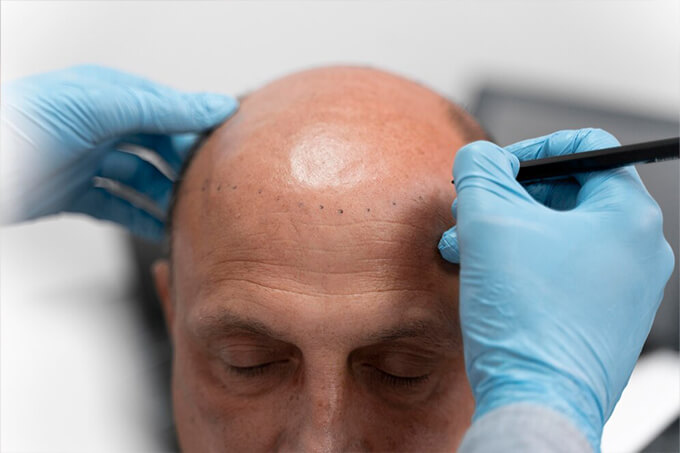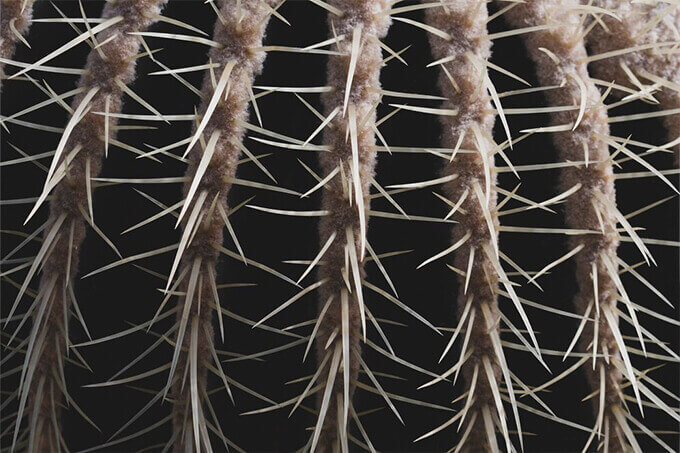The Rise of Bioengineered Hair Systems: Could Lab-Grown Hair Be the Future?
- Written by Kobla Kugbega
- Mar 24, 2025
- |
- 7 min read
 Listen to the full text
Listen to the full textIt is estimated that over millions of people are affected by hair loss globally. With an increasing demand to find solutions to this issue, the market for hair restoration is projected to be valued at $9 billion. The existing methods of hair restoration such as transplants, wigs for men, or medication (Minoxidil or Finasteride) all come with complications in terms of usage and replacement.
This is perhaps where bioengineered hair systems could provide a solution to this multifaceted problem. Scientists today are working towards creating hair follicles that can be grown in labs which, if successful, will present a problem free alternative to hair transplants and wigs. How can it be achieved? And when will we be able to see these products on the shelf? Let's find out.
Understanding Bioengineered Hair Systems

Bioengineered hair is hair follicles grown in a laboratory by using biotechnology, tissue engineering, and stem cells. It's a more precise and efficient solution as compared to traditional hair transplant techniques where hair follicles are harvested from a specific donor.
Countless scientists are trying to replicate hair follicle structures using pluripotent stem cell and 3D bioprinting technologies. In essence, scientists wish to grow hair within laboratories to develop completely functional hair follicles that can be implanted within the scalp, which for all intents and purposes, is perfect for treating baldness.
>The Science Behind Hair Grown In A Lab
Generally speaking, growing hair within a laboratory is not only intricate but also extremely captivating. Here is the breakdown for how it is achieved:
- Cell harvesting - Dermal papilla cells (specific cells that manage hair growth) are taken from donors or patients.
- Cell Cultivation – The cells are nurtured and multiplied within a controlled setting.
- 3D Tissue Engineering – Follicule-like structures are formed by a 3D bioprinter or a scaffold based tissue engineer.
- Follicular Implantation: Stem Cells, once matured in the lab, can be grafted onto the scalp to thrive through integration and hair will eventually grow.
Some amazing results have stemmed from the Riken Institute in Japan, where scientists successfully transplanted stem cell derived hair follicles within mice. The results demonstrated regrowth of hair, as well as a natural hair cycle. Now, Stemson Therapeutics and Harvard University are in the process of confirming these results in human beings.
>Important People and Studies in the Industry
This technology of hair made outside the body is being worked on extensively by some of the prominent biotech companies and research centers.
- Stemson Therapeutics. This company, located in San Diego, specializes in developing stem cell treatments for hair regeneration, and has received *$22.5 million dollars* in funding already.
- Riken Institute. (Japan) Was able to culture and transplant fully functional hair follicles in animal models with success.
- Harvard & Columbia University. Studies are being done on the development of racially and genetically based hair follicles that would correspond to ethnical hair features.
- Working together on increasing the productivity of 3D bioprinting for the generation of hair follicles.
>Benefits of Hair Made Outside the Body
With the introduction of bioengineered hair systems there will be considerable benefits in comparison to current alternatives.
1. Long Term Solution to Hair Loss
While hair transplants serve as a solution for hair loss, they are limited to existing hair to transplant. Lab-grown hair, on the other hand, can serve as a long term solution as there is no restriction on augmentation.
2. Tailored Hair Designs

Hair is a feature that should be tailored to an individual and can be bioengineered to achieve the desired color, texture, density and thickness.
3. Reduction of Scarring and Pain
Surgical procedures for traditional hair transplants are painful and time-consuming. The process is a lot more simple and non-intrusive for lab-grown hair implantation.
4. Ethical & Sustainable
Bioengineered hair puts an end to the use of donor hair and synthetic wigs which involve the use of plastic fibers which makes it a much more sustainable and ethical option.
>Challenges and Ethical Considerations
Any ethical reasoning and challenges posed by anyone's hair cannot be overlooked, in spite of the potential opportunities which lab-grown hair proposes. These issues need to be addressed prior to full-scale application.
1. Scalability & Production Costs
Can hair follicles be produced at an efficient rate? Current procedures are labor intensive and costly, particularly for treated hair and scalp which can cost up to $10,000 for each treatment and potentially more.
2. Accessibility & Affordability
Can the average consumer benefit from lab-grown hair technology, assuming it remains available? It is quite possible that the technology can only be accessed by those from higher economic backgrounds.
3. Regulatory Approvals
Bioengineered hair treatments are not on the previously established list of approved treatments by the FDA or other health organizations. Markedly intensive and detailed clinical studies and trials need to be conducted to ascertain safety, effectiveness, and efficiency.
4. Genetic & Ethical Concerns
What if the hair is just the beginning? Would it be possible to genetically alter anything else? There remains a legitimate concern by some bioethicists over the potential for genetic alteration in cosmetics which raises the question of undue human enhancement.
>Market Potential and Future Outlook
Bioengineered hair systems, so long as they address these challenges, may utterly transform the industry by delivering advanced, non-surgical transplantable solutions. Now, the international industry's expansion of hair Restoring Systems is predicted to reach $13 billion by 2028 bottomed on higher demand for more advanced technologies.
As bistable prostheses for burn victims and chemotherapy patients, as well as individuals suffering from alopecia, there is a scalable solution. Industry professionals consider that lab-grown hair treatment may be available for commercial purchase in the next 5 to 10 years, contingent upon regulatory approval and new technological developments.
>Conclusion
The hair restoration industry will experience spooky innovations with bioengineered hair systems. Stem cell research, 3D bioprinting, and tissue engineering will make it possible to grow hair in a lab, making hairpiece and hair restoration systems truly permanent, natural, and sustainable. But, there is a long road ahead where obstacles like affordability, scalability, and regulatory approvals need to be addressed. If biotech companies and researchers are able to overcome these challenges, lab grown hair might shape the future of hair restoration. Until then, patients dealing with alopecia will be able to rest easy knowing they are shifting into a new epoch where stem biotechnologies will allow them to regrow their hair.


